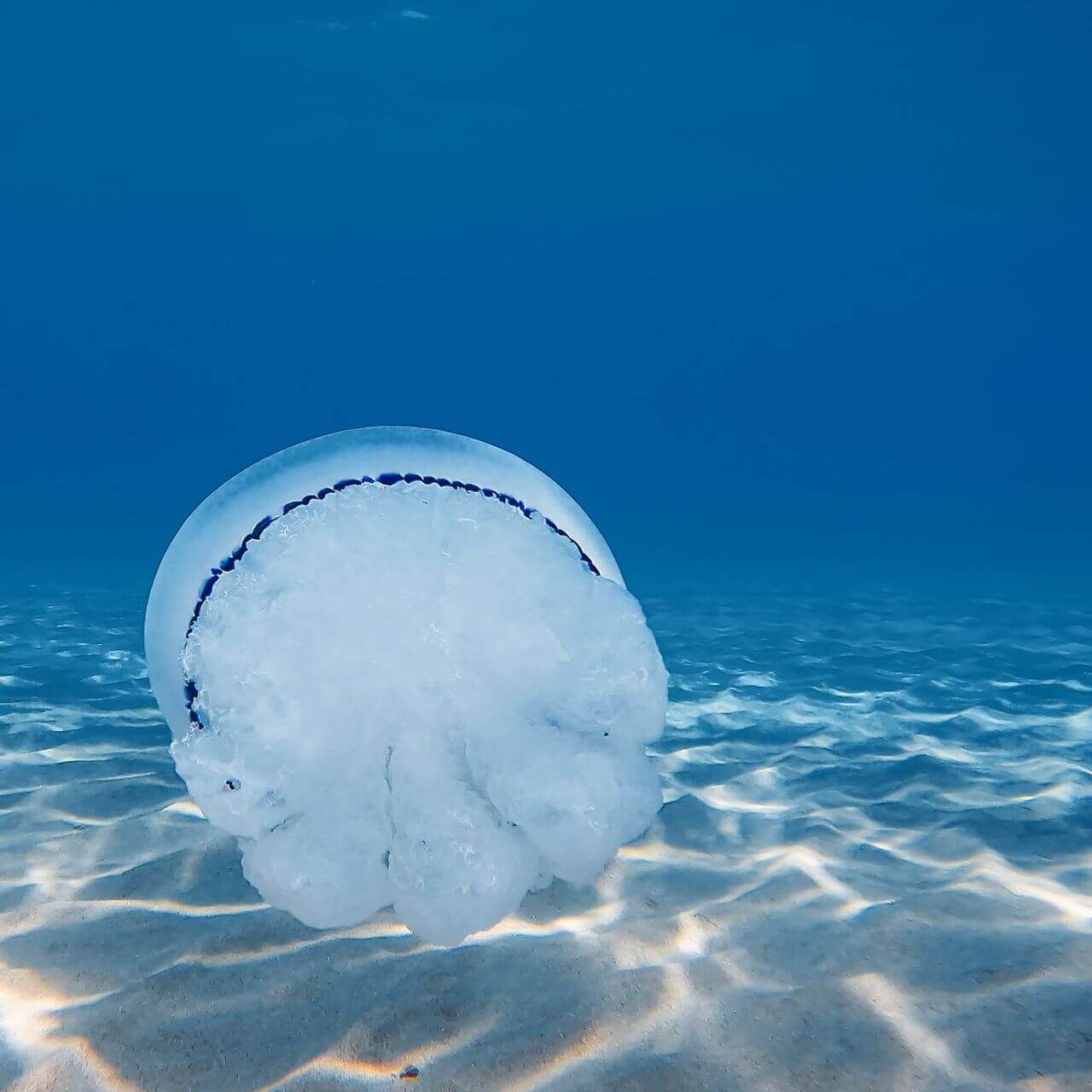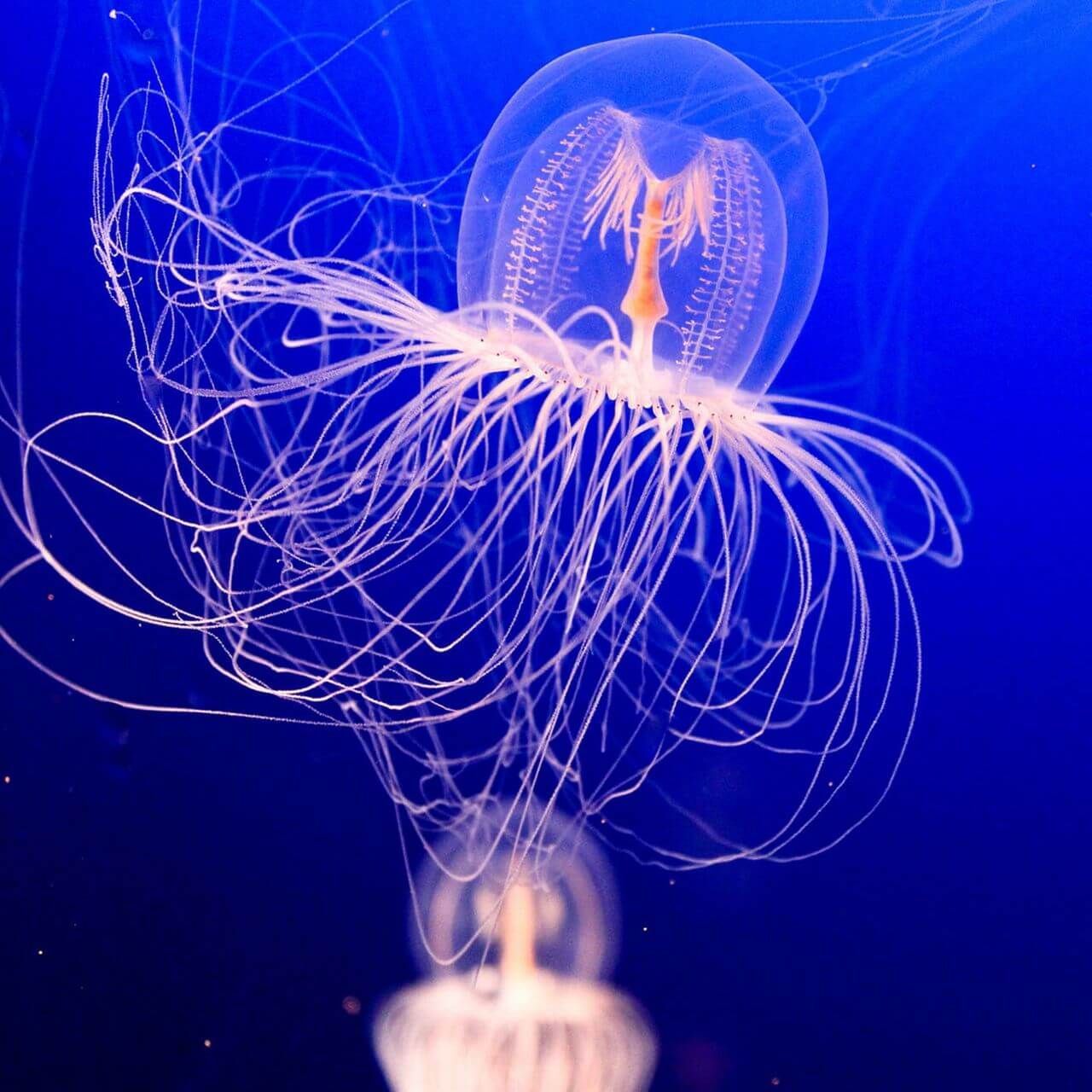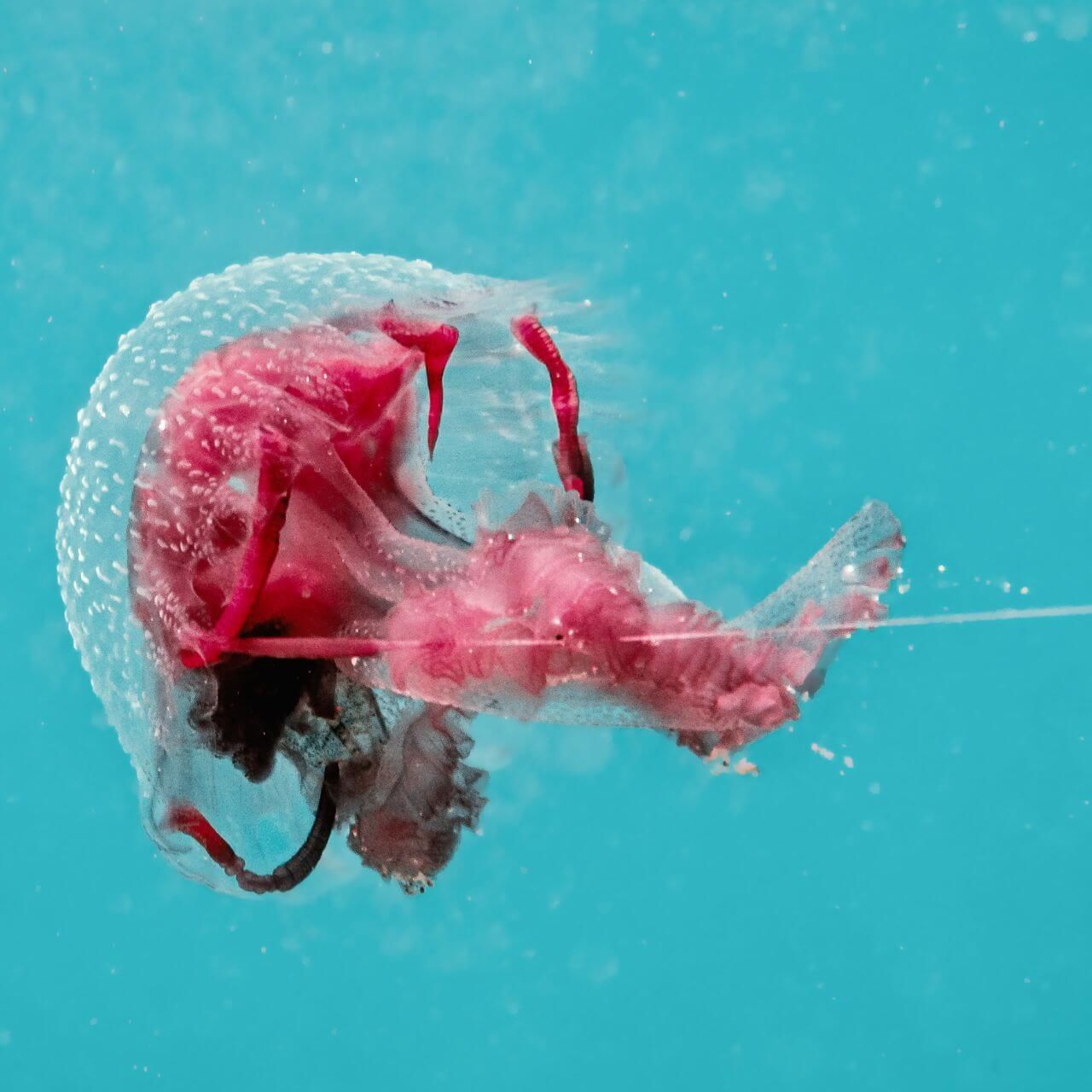Jellyfish

Let's Learn About Jellyfish
Word of the Week
Nematocysts
Jellyfish, corals, and their relatives have stinging cells called cnidocytes. Cnidocytes contain venomous, spear-like structures called nematocysts that shoot out when touched.
Jellyfish use nematocysts to avoid predators and catch prey.
Fast Facts

Where do jellyfish live?
Jellyfish are found in every part of the ocean.
True jellyfish are only found in saltwater. They are found in every ocean habitat, from shallow water to the deep sea.
What do jellyfish eat?
Jellyfish are carnivores.
They use their stinging tentacles to stun and catch prey like small fish and plankton. Plankton is any small organism drifting through the water, like fish eggs, crab larvae, and even other jellyfish.


What do jellyfish have in common?
- Jellyfish are invertebrates, they do not have a backbone.
- Jellyfish are made of a jelly-like substance called mesoglea.
- Jellyfish have two body segments, a bell and tentacles.
- Jellyfish have stinging cells called cnidocytes used to protect themselves and catch prey.
- Jellyfish are poor swimmers. They move through the water by pulsing their bell.
How many jellyfish are there?
There are hundreds of species called jellyfish, though not all of them are true jellyfish.
Many species of jellyfish have a growing population. Scientists believe that an increase in jellyfish population could be a result of overfishing of their predators and warming ocean water from climate change.

Species Spotlight
Lion's Mane Jellyfish
Cyanea capillata
The lion’s mane jellyfish is one the largest jellyfish in the world. Its tentacles reach more than 100 feet long. That is longer than a blue whale! It has more than 1,000 tentacles hanging from its bell, giving it a fluffy appearance similar to a lion’s mane.
The lion’s mane jellyfish swims by pulsing its bell but is often carried around by the ocean’s currents. They are most common in cold water. These enormous jellyfish get energy by eating small fish and zooplankton, including other jellyfish. They use their stinging tentacles to stun prey and move it to their mouth beneath their bell.
The lion’s mane jellyfish is a predator to some but prey to others. Sea turtles, sea anemones, and fish eat lion’s mane jellyfish, especially when they are young. Like most jellyfish, lion’s mane jellyfish start their life as a polyp attached to the seafloor. Once they detach and drift around, they make an easy meal.
As adults, lion’s mane jellyfish are challenging for animals to eat because of their size and stinging tentacles. While they are not deadly to people, their stingers certainly cause pain and discomfort. If you ever have the privilege of seeing a lion’s mane jellyfish (or any jellyfish!), give them the space they deserve.
Conservation Corner
Jellyfish Overpopulation
Jellyfish produce thousands of offspring every time they reproduce. Most species gather in large groups called blooms when breeding. Ocean predators like fish and sea turtles feed on jellyfish, which keeps their populations in check. In recent years, jellyfish blooms have grown. Scientists think this is a sign that the ocean ecosystem is out of balance.
Every ecosystem relies on a balance of predators and prey so populations of plants and animals do not grow too large. Large-scale fishing practices catch millions of fish each year. Many of these fish eat jellyfish. Without them in the ocean, jellyfish populations have grown rapidly.
Additionally, scientists hypothesize that jellyfish populations are growing because of climate change. Climate change causes the ocean to warm. Warm temperatures are perfect for many species of jellyfish but make it harder for other ocean animals to survive.
Most people agree that an ocean full of nothing but jellyfish would not be good. You can help stop the growth of jellyfish populations by eating seafood caught sustainably to stop overfishing. You can also reduce your impact on climate change by using less energy.
Jellyfish Jumble
Determine if each trait belongs to jellyfish or true fish.
Learn More!
Glossary
Adaptation
The process by which a species becomes more fit for its environment over the course of several generations. It is a result of natural selection.
Bell
The top section of a jellyfish's body that contains their mouth and digestive system.
Carnivore
An animal that primarily eats meat.
Cnidaria
Group of invertebrates including corals, jellyfish, and sea anemones.
Cnidocytes
Stinging cell found in the tentacles of corals and their relatives.
Gills
The respiratory organ that allows fish, amphibians in their larval phase, and crustaceans to absorb oxygen molecules from water.
Larva
The immature phase of an animal that undergoes metamorphosis.
Invertebrates
A class of invertebrates that includes all snails and slugs.
Medusa
The adult phase of a jellyfish.
Mesoglea
The jelly-like substance of jellyfish and other cnidarians.
Metamorphosis
The process of an animal changing and developing from an egg to an adult through different life phases.
Nematocyst
The venomous, harpoon-like organelle in cnidocytes (stinging cells) of jellyfish and their relatives.
Omnivore
An animal that eats both plants and animals.
Overpopulation
When animal's population grows too large and exceeds the carrying capacity.
Plankton
Organisms (often small) that free-float through the ocean. Krill, fish eggs, and microscopic algae are examples of plankton.
Predator
An animal that hunts other animals for food.
Prey
An animal that is hunted and eaten by another animal.
Spawn
The release of eggs into the water for reproduction.
Species
A closely related group of animals with similar characteristics that are capable of reproducing (example: tigers).
Tentacles
Long, flexible limbs or organs primarily used by animals to catch food or defend themselves.
Venom
A toxin that is injected into prey through teeth or a stinger.
Vertebrate
An animal that has a backbone.







